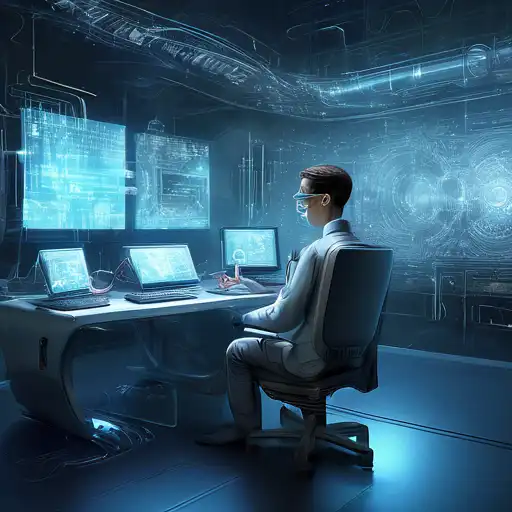Introduction to Computer Vision Technology
Computer vision technology has undergone significant transformations over the past few years, evolving from simple image recognition to complex systems capable of understanding and interpreting visual data in real-time. This advancement is largely due to the integration of artificial intelligence (AI) and machine learning (ML), which have enabled computers to process and analyze images with unprecedented accuracy and speed.
Key Advancements in Computer Vision
The field of computer vision has seen several groundbreaking advancements that are reshaping industries and everyday life. Below are some of the most notable developments:
- Deep Learning Models: The adoption of deep learning models, such as convolutional neural networks (CNNs), has significantly improved the ability of systems to recognize patterns and objects in images.
- Real-time Processing: With the advent of more powerful processors and optimized algorithms, computer vision systems can now process and analyze video feeds in real-time, enabling applications like autonomous driving and live surveillance.
- 3D Image Recognition: Advances in 3D imaging technology have opened new avenues for computer vision, allowing for more accurate depth perception and object recognition in three-dimensional spaces.
- Edge Computing: The shift towards edge computing has allowed computer vision applications to run directly on devices, reducing latency and improving privacy by processing data locally.
Applications of Advanced Computer Vision
The advancements in computer vision technology have led to its widespread adoption across various sectors. Here are some of the key applications:
- Healthcare: From diagnosing diseases through medical imaging to assisting in surgeries, computer vision is revolutionizing the healthcare industry.
- Retail: Automated checkout systems, inventory management, and customer behavior analysis are just a few ways computer vision is being used in retail.
- Automotive: Autonomous vehicles rely heavily on computer vision for navigation, obstacle detection, and traffic sign recognition.
- Security: Facial recognition and anomaly detection systems are enhancing security measures in public spaces and online platforms.
Challenges and Future Directions
Despite its rapid advancement, computer vision technology faces several challenges, including privacy concerns, the need for large datasets, and the risk of bias in AI models. However, ongoing research and development are addressing these issues, paving the way for more ethical and efficient systems. The future of computer vision lies in further integration with AI, improved algorithms for better accuracy, and the development of more sustainable and accessible technologies.
Conclusion
The advancements in computer vision technology are not just transforming how machines interpret visual information but are also reshaping industries and improving human lives. As we continue to push the boundaries of what's possible, the potential applications of computer vision are limitless. With ongoing innovations and ethical considerations, the future of computer vision looks brighter than ever.
